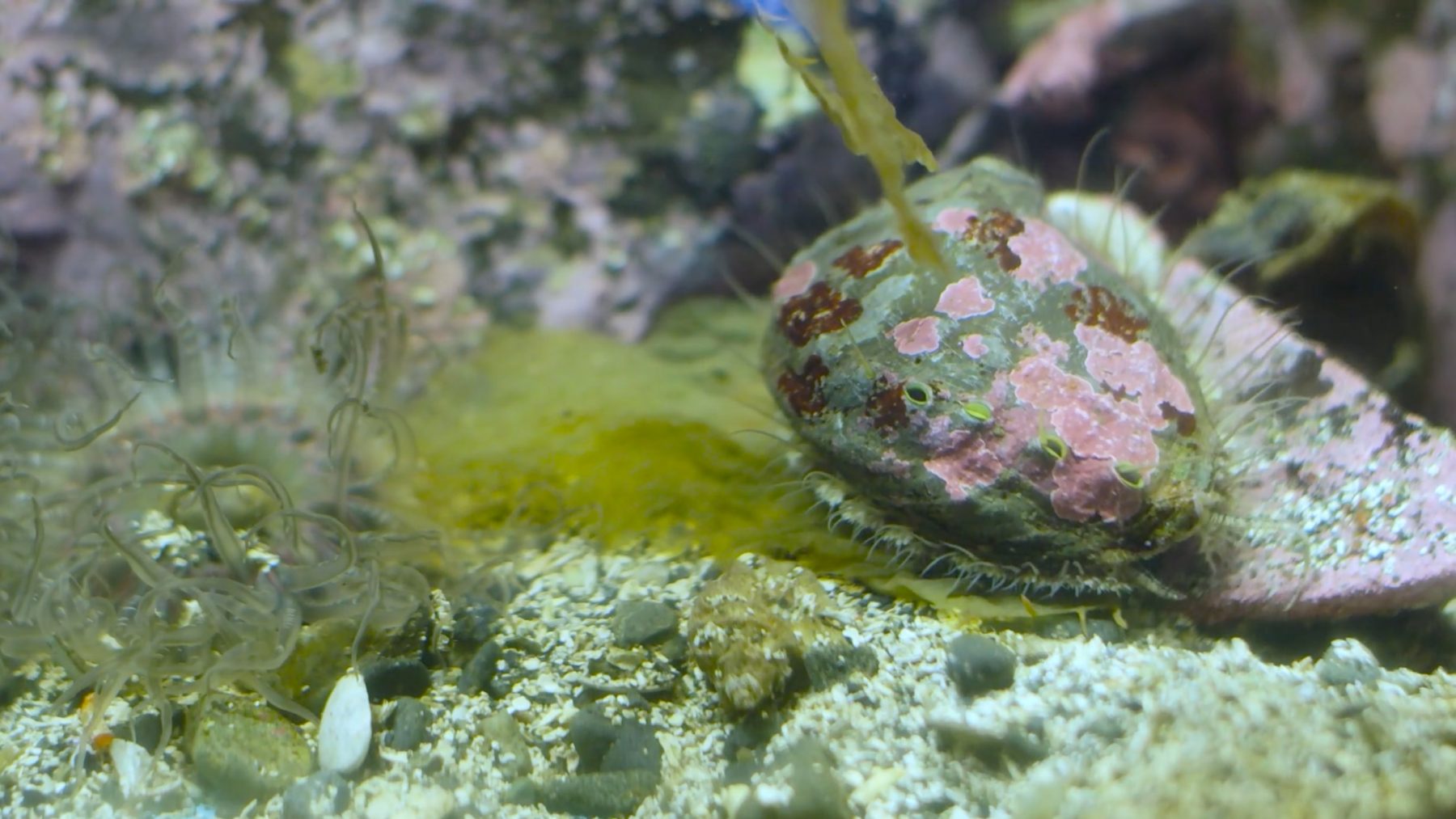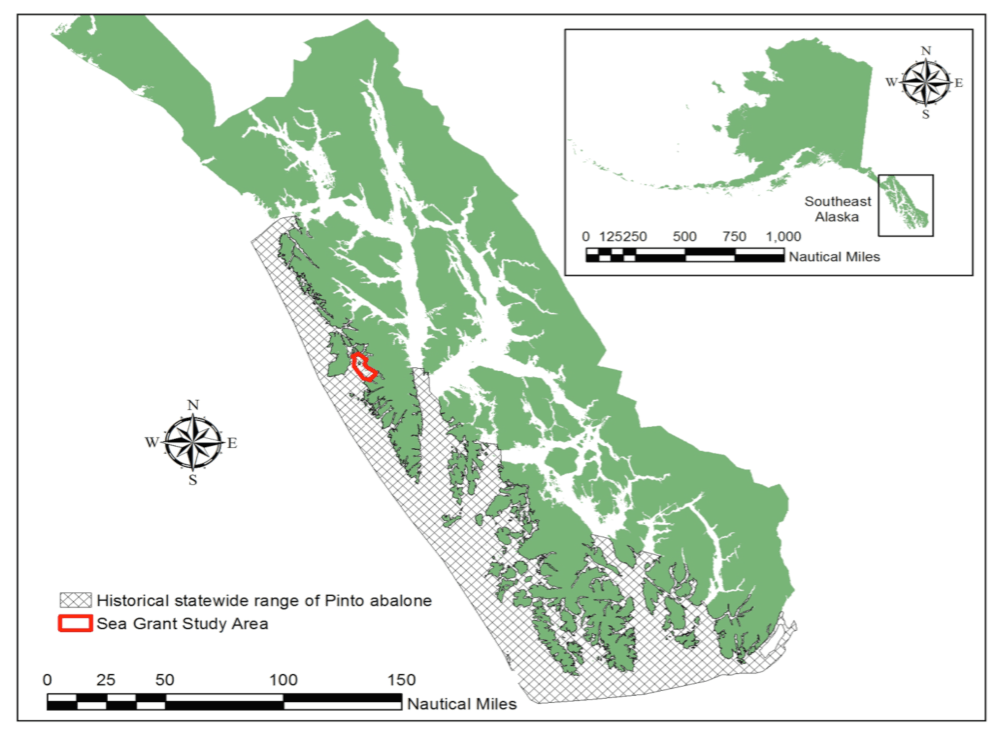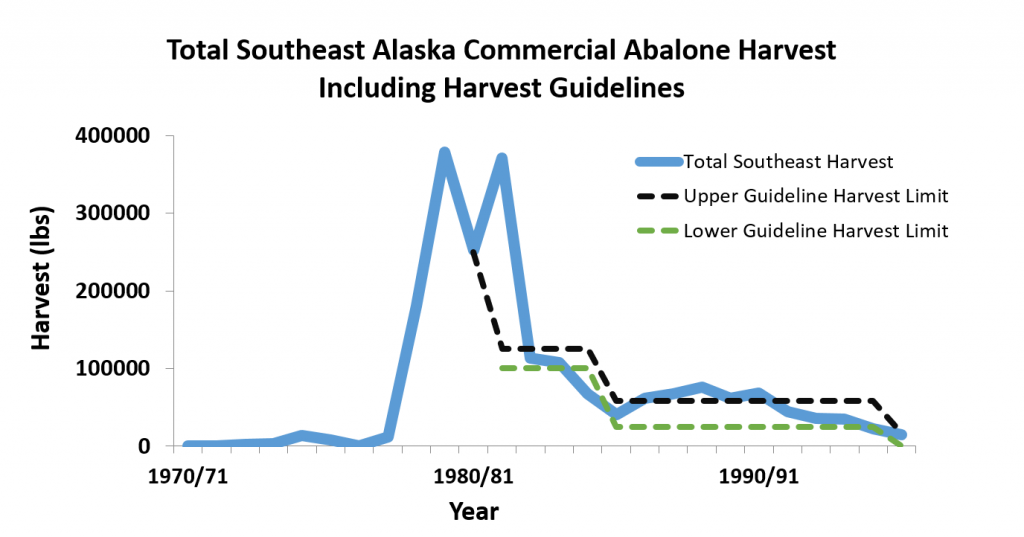
Research Questions
-
What is the size class structure of abalone aggregations?
-
Are local aggregations of pinto abalone in sufficient densities for fertilization success?
-
Is there evidence for successful recruitment of juvenile abalone?
Commercial harvest of pinto abalone throughout Southeast Alaska declined rapidly prior to fishery closure in 1996. In addition, regional sea otter populations have rebounded in recent decades, substantially increasing predation pressure on abalone. A historical lack of population assessments at this northern edge of the species’ range was cited in the 2014 decision by the National Marine Fisheries Service as a reason to not list pinto abalone under the Endangered Species Act.
To this day, the true status and trajectory of pinto abalone stocks in Southeast Alaska remains unknown.

This project was initiated to develop a long-term monitoring plan for pinto abalone in Southeast Alaska, currently the only region in North America where humans can legally harvest pinto abalone in personal use and subsistence fisheries. The absence of basic population data, such as estimates of density, size and aggregation distribution, poses an ongoing challenge to informed management of these fisheries. Our intent is that the results of this study will inform future management of this species and serve as a pilot project for surveys that may cover the geographic extent of pinto abalone in Alaska.
